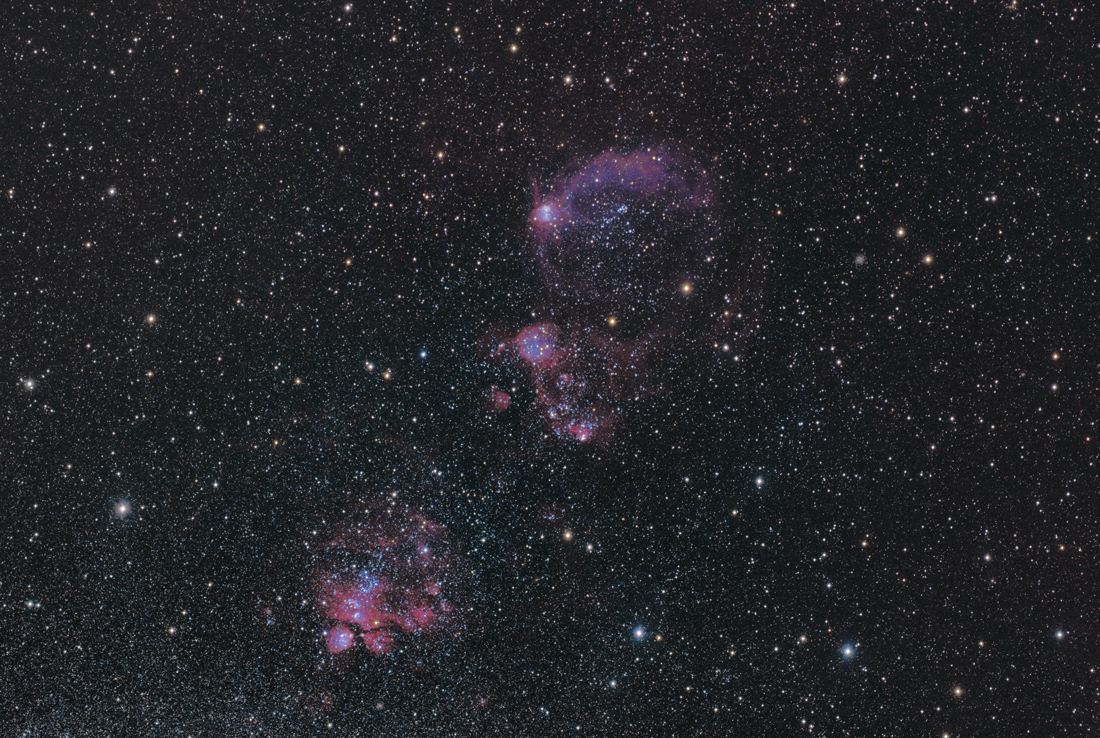NGC602 Complex: This area is at the tip of the Small Magellanic Cloud (SMC), an irregular dwarf galaxy
orbiting our Milky Way, about 200,000 light years from us (for perspective, our galaxy is about 100,000 light years across); the bulk of the SMC is below and to the left of this image. Yes, these nebulae and star clusters are in a different galaxy from our own Milky Way!
Above the center of the image is NGC602 (the group of bright blue stars in the middle of the top nebulous region in the image), a young (about 5 million years old; for perspective,
our sun is about about 900 times as old, 4.5 billion years) star cluster still surrounded by some of the dust and gas from which the stars formed (and from which stars continue to be formed), called N90.
NGC602 is about 200 light years in diameter.
At the bottom of the image are several more star clusters (NGC465, NGC460 and IC 1662), also surrounded by nebulosity. Between NGC602 and NGC465 is yet another star-forming region, connected to the other two.
All these are located in the wing of the Small Magellanic Cloud leading to a bridge of hydrogen gas that spans the space between the SMC and Large Magellanic Cloud.
|
Technical Information:
(HaLB)(HaR)GB: 600:165:150:150:150; Luminance layer consists of a blending of twenty 30-minute unbinned images taken through an Astrodon Ha filter,
ten 15-minute unbinned images taken through a blue filter, and eleven 15-minute unbinned images taken through a clear filter; Red channel consists of a blending of the same 20 images
taken through the Ha filter and ten 15-minute images taken through a red filter, while the G and B channels consisted of ten 15-minute unbinned images each.
Equipment: Takahashi FSQ106N, SBIG STL11000M (with Astrodon filters), on a Bisque Paramount ME German Equatorial Mount.
Image Acquisition/Camera Control: CCDSoft v5, working in concert with TheSky v6, all controlled with ACP Observatory Control software.
Processing: All images calibrated (darks and dawn flats), aligned, sigma reject performed, and combined in Pixinsight. Luminance layer and red layer constructed in Pixinsight.
Color combine in Pixinsight. Most post-processing work (curves and levels, increasing saturation) was done in Pixinsight, with a small amount in Photoshop CS5.
Location: Data acquired remotely from Fair Dinkum Skies, near Moorook, South Australia.
Date: Images taken on many nights in September and October of 2013. Image posted April 1, 2015.
CCD Chip temperature: -15C
Copyright 2013, 2015 Mark de Regt

